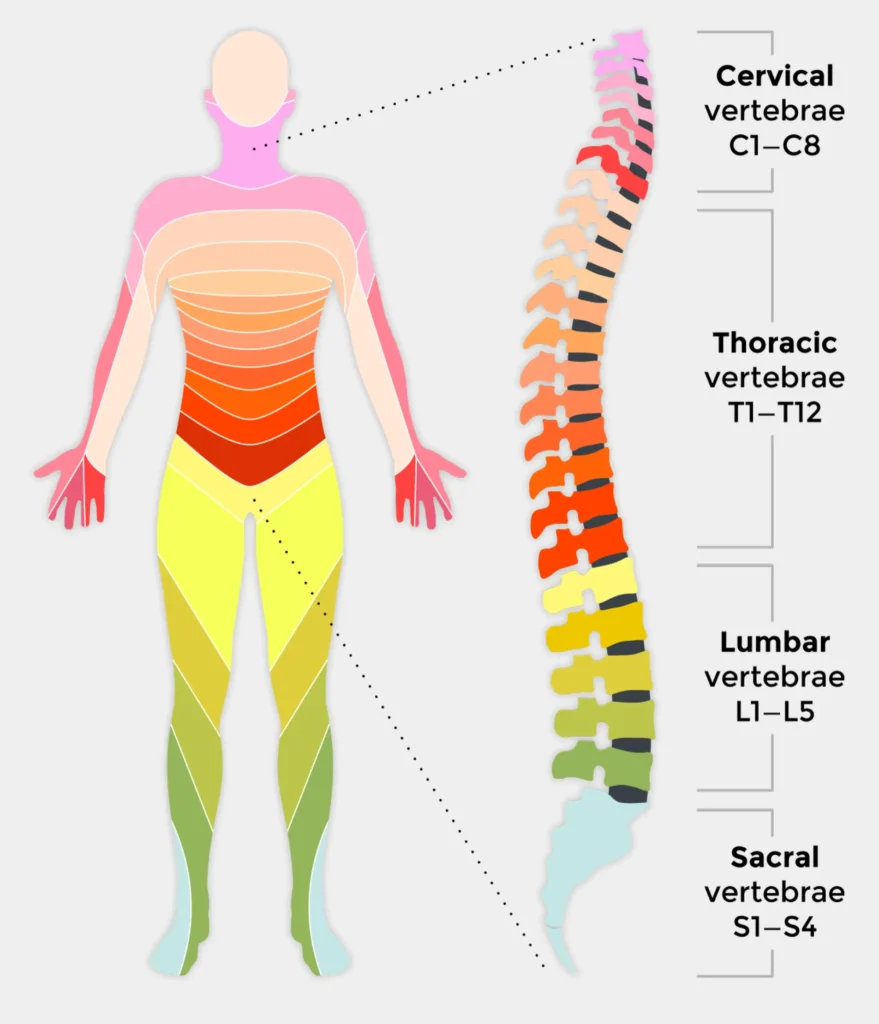What is spinal cord injury?
There are an estimated 105,000 people in the UK living with a spinal cord injury and each year approximately 4,700 people are newly injured.
The spinal cord is responsible for communicating two way messages to and from the brain to all areas of the body – your muscles, organs and skin. A spinal cord injury occurs when the spinal cord is damaged through illness or injury. This interrupts the messages to and from the brain, leading to partial or full loss of movement in parts of your body.
A spinal cord injury is life-changing. You may need to use a wheelchair to get around, deal with pain and fatigue, and manage bladder and bowel issues. Sexual function may also be affected, depending on your level of injury. Your family can also feel the impact of your injury, and may deal with feelings of guilt or uncertainty for the future. Back Up is a charity for everyone affected by spinal cord injury in the UK – we’re here to help you rebuild your confidence and independence.
Your spinal cord
The spinal cord is a bundle of nerves and other tissue which extends from the brain’s base at the top of your neck down the length of your back. It’s protected by the bones (or vertebrae) that make up the spine, and by spinal fluid.
Your brain and spinal cord are vital for controlling your bodily functions. The spinal cord is responsible for communicating two-way messages to and from the brain to all parts of the body – your muscles, organs and your skin. We are able to feel pain and move our arms or legs because of these messages or impulses.
If the spinal cord is damaged or injured, some of the messages or impulses may be ‘interrupted’. This can lead to partial or total loss of feeling or movement in parts of your body – including your limbs and your internal organs.
Most injuries cause loss of movement and feeling in the parts of the body below the level of the injury. If you damage or break your spinal cord close to your neck, this will cause paralysis in a larger part of the body than damage to your spinal cord lower down your back. As well as the physical impact of a spinal cord injury, there are also emotional and psychological effects on the person concerned – and their family. Back Up can help you and your loved ones adjust to life with spinal cord injury.

Cervical vertebrae
- C1-3 Limited head control
- C4 Breathing and shoulders shrug
- C5 Lift arm with shoulder, elbow flex
- C6 Elbow flex and wrist extension
- C8 Finger flexion
Thoracic vertebrae
- T1 Finger movement
- T2-T12 Deep breaths, deep breathing
- T6-L1 Deep exhale of breath, stability while sitting
Lumbar vertebrae
- L1-L2 Hip flexion
- L2-L3 Hip movement toward middle of body
- L3-L4 Knee extension
- L4-L5 Ankle extension
- L5 Extension of big toe
Sacral vertebrae
- S1 Movement of foot and ankle
- S1-S2 Toe movement
- S2-S4 Function of bladder and bowel
Contact
Register for our services online or call the team on 020 8875 1805.
Want to learn more about the services we offer? Please click here to read our most up to date services brochure.


